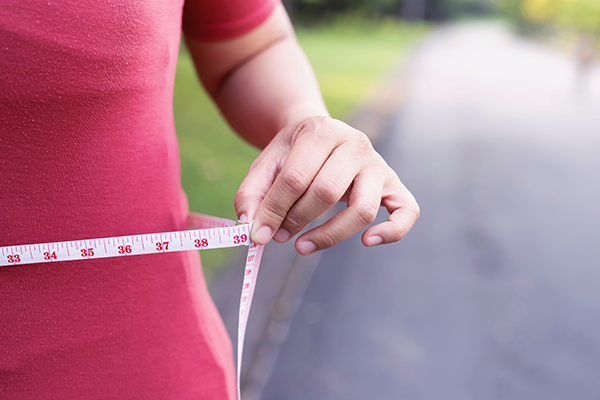Walking vs. Running: Which Exercise Is Better for You?

Are you looking for a no-fuss workout in the great outdoors? Maybe one that lets you see the local sights while getting your heart rate up? Unless you acquire some serious gear, your two main choices are walking and running.
But which will help you reach your fitness goals in a hurry? That’s a thornier question than you might think. So here’s how to choose between walking and running.
Benefits of Running

The legions who went in on the running craze of the ’80s weren’t far off: Running is excellent for you. Assuming you’re healthy and relatively fit, taking up running can provide many benefits. strengthens your heart and lungs, tones up your leg muscles, boosts mood, burns fat, improves bone density, and ramps up immune function.
1. Running is a great cardio workout
According to a 2015 study of more than 55,000 people, those who ran regularly — even at slow speeds for five to 10 minutes a day — were at a reduced risk of death from any cause. So you don’t have to become a marathoner or even a serious, regular runner to derive many of its benefits.
If you run progressively — going a little bit further, faster, or both, over time, and cycling in periods of lower-intensity work — then running can continue to make you stronger and fitter over a lifetime.
2. Running helps you burn calories
Like any physical activity, running elevates the metabolism above its normal resting rate, thereby burning additional calories. Jogging at a 10-minute-per-mile pace for an hour, a 175-pound man burns about 800 calories. Do this often enough, in conjunction with controlled caloric intake, and running will help you get leaner, too.
3. Running works your legs and core
Check out the leg musculature of any runner, and the effect that running has on your lower body is obvious. But running also strengthens your core, as it fires to stabilize your hips with each step you take.
And a strong core provides balance, stability, and stamina in workouts and daily life alike.
4. Running offers endless variety
The speed at which you run is an easy way to scale up or down the difficulty of the exercise. And there are so many different types of running workouts that you can experiment with: speed work, fartleks, tempo runs, trail runs, treadmill workouts, hill runs, etc.
Plus, you can always switch up the scenery whenever you want — the beach, a hiking trail, or a neighborhood park are all great locations to run.
Benefits of Walking

Many of the benefits of running apply to walking as well.
1. Walking is a good cardio workout
If you take up a regular walking routine after a sedentary period, your cardiovascular system and lower body muscles will become stronger, your mood will improve, and your immune system will function better.
Walking for 60 minutes at a brisk rate of 3.5 miles per hour, a 175-pound man burns about 360 calories.
2. Walking is a low-impact exercise
Walking is a low-impact activity, which makes it an attractive and accessible cardiovascular exercise for people of all fitness levels. Because it’s less intense than running, which is generally high impact, the health benefits of walking level off sooner than they would if you were running.
You can counteract this by making your walking workouts more intense: hiking mountains, for example, walking uphill or at an incline on a treadmill, or carrying a weighted vest or pack.
3. Walking can improve mood
Studies show that walking can help you overcome anxious feelings and even help you deal with stress more effectively. And these benefits are only heightened if you walk outdoors, as research suggests that mood improvement is a key benefit of walking outside.
4. Walking can contribute to weight loss
Weight loss and fat loss basically come down to energy expended versus energy consumed: As long as you’re burning more calories than you eat, you can expect to lose weight. Walking can help on both sides of that equation.
It can help you burn calories and can even help manage the amount of calories you consume. Participants in one study walked briskly for an hour, but didn’t eat more, feel hungrier, or produce more of the hunger hormone ghrelin.
Walking vs Running: Which Is Better?
Provided you’re healthy, you can’t go wrong with either activity.
Running
The primary difference between the two exercises is that running is more difficult. Slow jogging may be meditative and relaxing for the super-fit, but it’s a fatiguing workout for most people, necessitating a warm-up before and shower afterward. That means you can only handle so much of it.
Walking
Walking is much more laid-back. You can incorporate it more easily into your day (chatting with others or having a phone conversation as you stroll). Post-walk, most people feel focused and relaxed. And unless you’re walking in the blazing heat, there’s no need to shower afterward.
The answer?
If you’re looking for an activity to boost fitness and cardiovascular health fast, with a minimal investment of time — and you’re already in decent shape — running is the way to go. If you want something that’s relaxing, social, and easy to do anytime and anywhere, walking is your pick.
Which One Is Better for Weight Loss?

Many factors influence weight loss, but the one that stands head and shoulders above the rest is energy balance — also known as “calories in, calories out,” or CICO.
“Calories in” refers to the energy you consume in the form of food and beverages. “Calories out” refers to the energy you burn through your daily activities. If “calories in” exceeds “calories out,” you gain weight. If the reverse is true, you lose it.
Running for weight loss
Because running burns about twice as many calories per minute as walking, you’d think it would be the clear winner for weight loss.
But don’t throw out your training kicks just yet. As beneficial as running can be, there’s a limit on how much of it the average exerciser can handle. A 2000 study found that injuries are much less common among regular walkers than runners. A separate study found that 27% of novice runners suffer running-related injuries each year; for marathoners, the percentage jumps to over 50%.
Walking for weight loss
Injuries is where walking has an edge: Most healthy people can walk intermittently several hours a day and feel no ill effects. Walking injuries are rare. Regular bouts of incidental walking throughout the day — unrelated to formal exercise — have been linked to better metabolic health and better body composition, too.
“We can quantify the calories used for all sorts of exercise,” says Dr. John Mercer, professor of Kinesiology at the University of Nevada Las Vegas — “but the one that a person will stick with is often the ‘best’ exercise. Realistically, that means picking an activity that you enjoy.”
So even though running is a faster per-minute calorie burner, walking may be at least as effective at controlling weight. That’s because you may be more likely to keep it up for longer periods per workout and more regularly over time. This shifts the “calories out” side of the equation more consistently to the energy-deficit, weight-loss side. It’s the classic story of the tortoise and the hare.
The answer?
The one that burns fat better is whichever one you’ll do more of. And there’s no rule saying you can’t do both:
- Run a few times a week for the cardiovascular benefits.
- Walk as often as possible for a calming, fat-burning boost.
How Much Running or Walking Should I Do for Health?

It doesn’t take much running, or walking, to make you healthier. Some movement is always far better than none at all.
Running for health
If running is your primary form of exercise, you should aim to do at least two 30- to 50-minute sessions a week, and ideally three or four. As long as you vary your speed, terrain, distance, and intensity (and monitor mood, fatigue, and energy), you can work up to running as many as six days a week.
Walking for health
Most people — even athletes — benefit from accruing at least a half-hour of walking a day through a combination of formal and incidental walking. The 10,000 step mark — which adds up to about an hour and 40 minutes of walking for most people — is probably an overstatement. But the lesson that more walking is almost always a good thing is well-taken.





